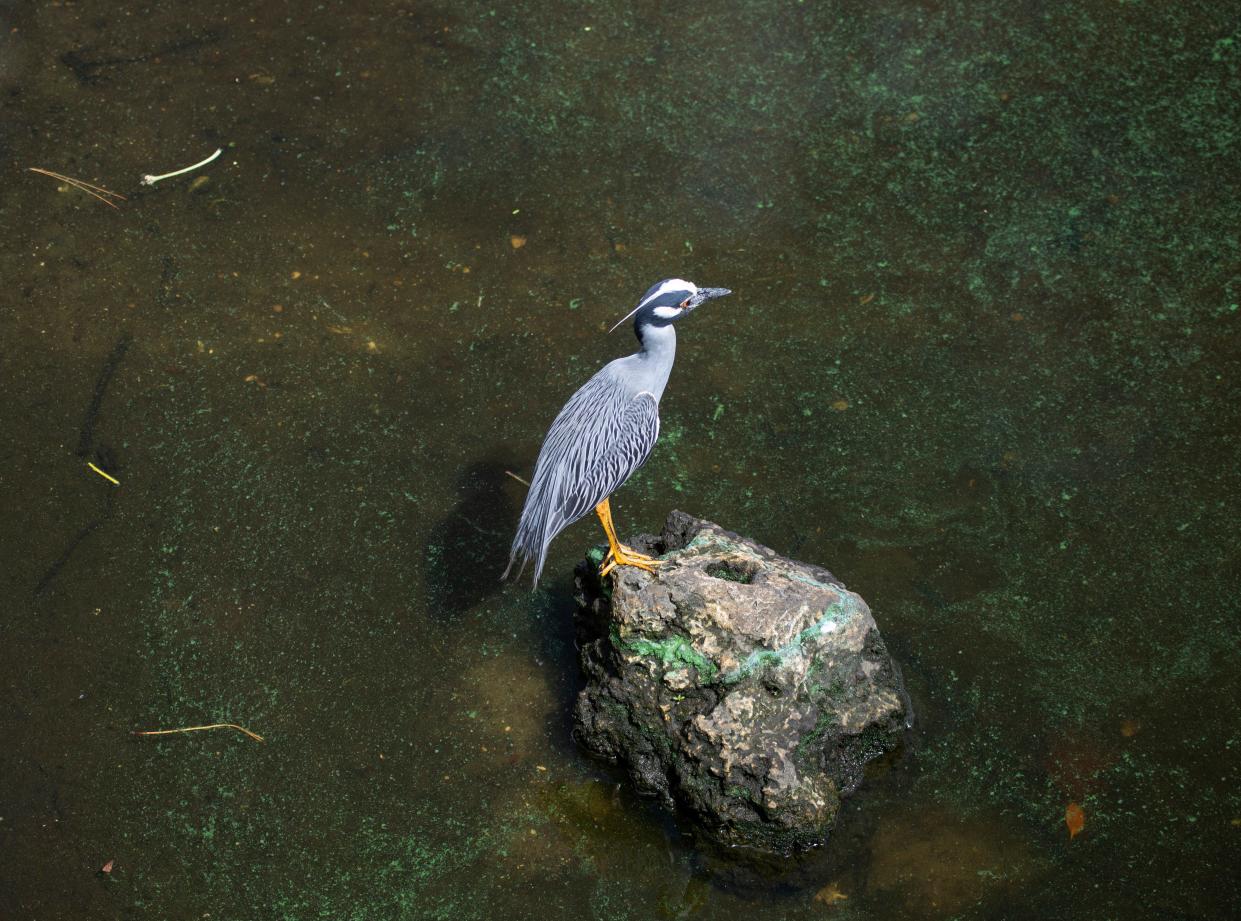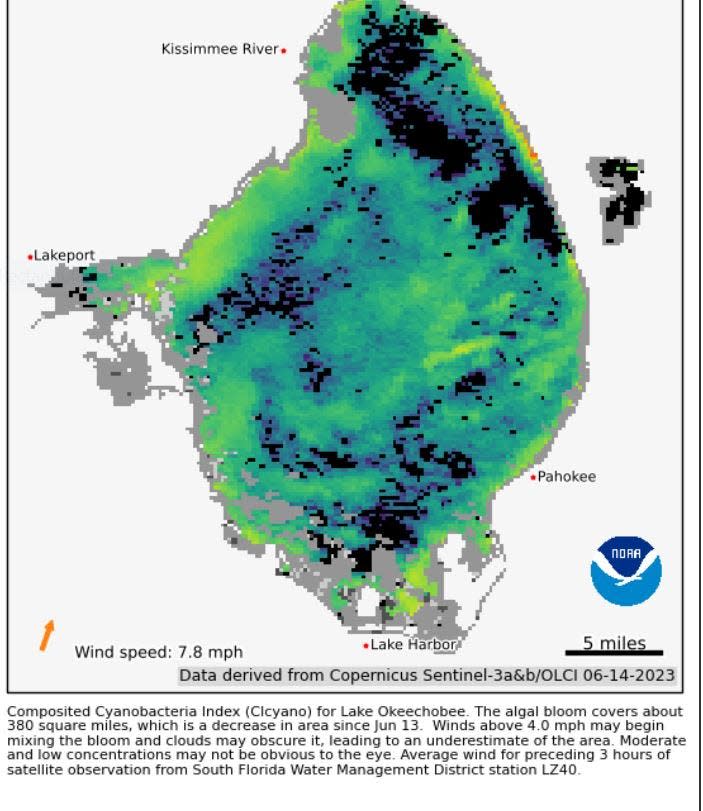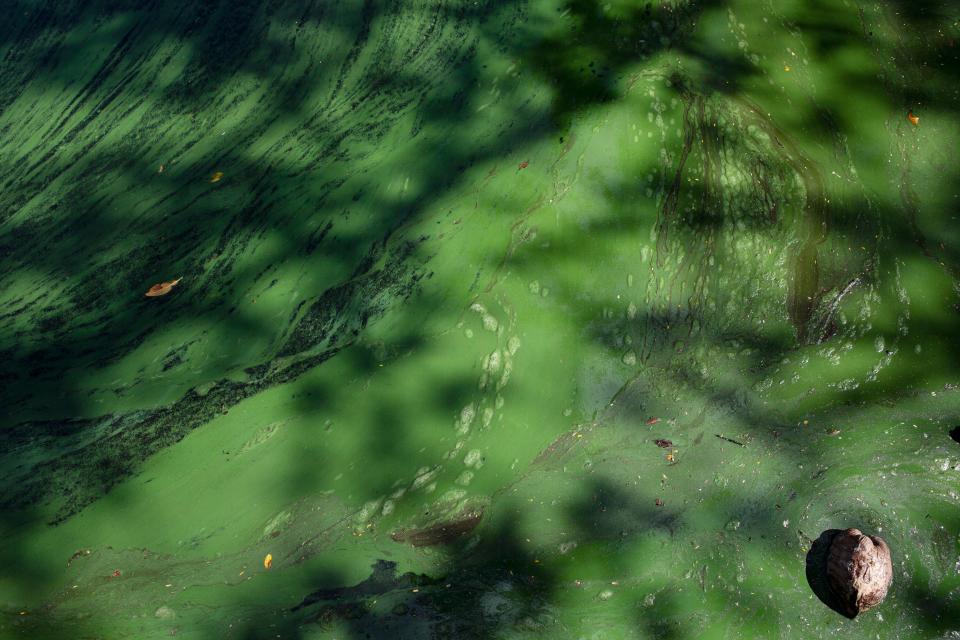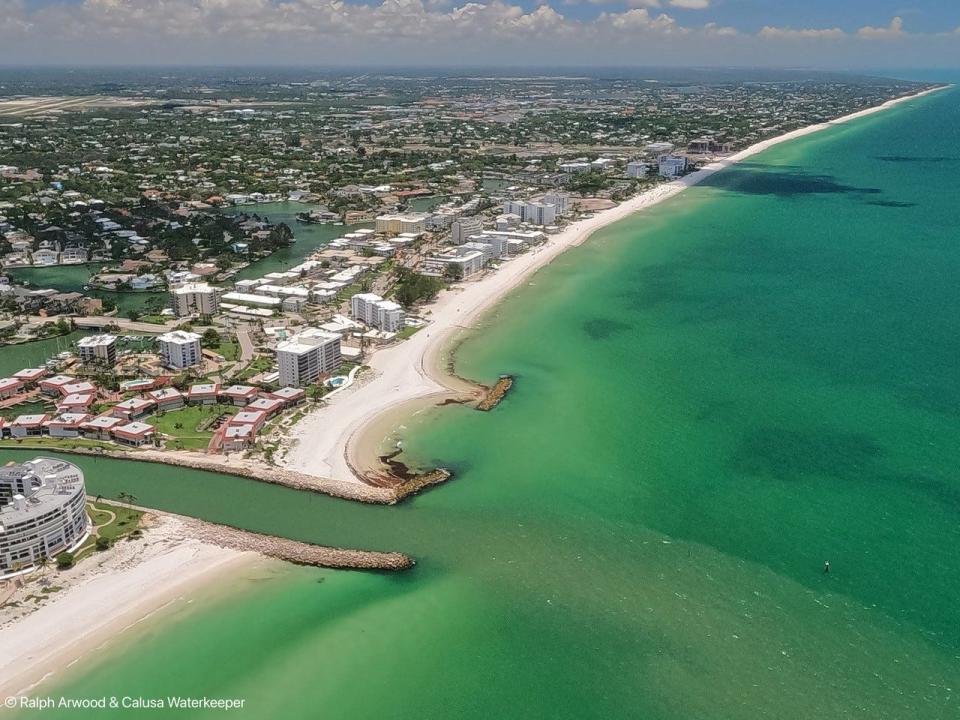Blue-green algae blooms plague Southwest Florida waters from Naples to Lake O: What we know

From Naples to Lake Okeechobee and along the Caloosahatchee in between, algae is troubling Southwest Florida.
A bloom currently coats more than 350 square miles of the lake; scientists have sampled cyanobacteria in multiple spots on the river and Collier County beach water is brown as saltwater species rolls on the surf.
The different places have different varieties, some requiring more caution than others. Here's what we know about the region's algae situation:
More than half of Lake Okeechobee is covered with the stuff

A cyanobacteria bloom on the big lake encompasses some 380 square miles, according to satellite images shot Wednesday by the Copernicus Sentinel satellite. However, the National Oceanographic and Atmospheric Administration points out that's a decrease from the previous day, though winds and clouds may affect the imagery.
Concerns are when water managers make releases from the lake that algae will travel down the Caloosahatchee toward the Gulf ( and indeed, blooms have been cropping up in the river regularly for the last month). The lake is 14 feet above sea level, a foot higher than it was the year before.
More: More cyanotoxin warnings in the Caloosahatchee; algae-tainted Lake O releases paused
More: Army Corps: Expect nutrient-laden Lake O releases through at least late summer, early fall
As the nonprofit Captains for Clean Water explained in a release Wednesday, "The possibility of those discharges transporting toxic blue-green algae to the populated coasts (is) also a reality. It’s times like these when the importance of completing Everglades restoration is magnified."
Cyanobacteria is spreading in the Caloosahatchee

As of Thursday, seven places in the Caloosahatchee have been flagged for cyanobacteria, from the Ortona Lock in Glades County to the Paradise Marina in North Fort Myers, across the river from downtown Fort Myers. A statewide dashboard and map of current blooms and conditions is here: https://protectingfloridatogether.gov/water-quality-status-dashboard.
For the third week in a row, the Department of Health in Lee County issued a release warning people about blue-green algae. This is the agency's advice for areas with cyanobacteria blooms:
You should not drink, swim, wade, water ski or engage in activities that may cause you to come in direct contact with waters where there is a visible bloom.
Exercise caution when using personal watercraft or boating, to avoid stirring up or contacting the algae or the affected water.
Avoid getting affected water in your eyes, nose or mouth.
Wash your skin and clothing with soap and water if you have contact with algae or discolored or smelly water.
You should keep pets and livestock away from the waters in this location.
Eating fillets from healthy fish caught in freshwater lakes experiencing blooms is safe. Rinse fish fillets with tap or bottled water, throw out the guts and cook fish well.
You should not eat shellfish from this location.
Saltwater algae is turning Collier County beaches brown
On Tuesday, Calusa Waterkeeper's eye in the sky, volunteer pilot Ralph Arwood noted after a flight over Collier County, "Looks like Trichodesmium scattered all along the coast."

The next day, the city of Naples blasted out an email subject-lined: "Things to Know: Why is the water brown at the beach?" The answer, as Arwood predicted, Trichodesmium, an algae variety known as "sea sawdust" on account of its fine particles which are visible in the water it colonizes. Though its blue-green algae, it can tint the water colors ranging from silvery white to rusty brown. Trichodesmium's smell veers between sweet and vegetative decay, and can be downright nauseating if the breeze is right.
Though it typically blooms offshore, the city notes "We see it hit our beaches almost every year in May and June; occasionally wind and currents bring it to our beaches and even into some back bays."
The good news (as far as we know),"Researchers have not documented any negative effects of Trichodesmium on marine life or people in Florida," according to the city's release, but Florida's Department of Health doesn't recommend swimming in any algae bloom
This article originally appeared on Fort Myers News-Press: SWFL algae season turns Naples coast brown, Caloosahatchee areas green

